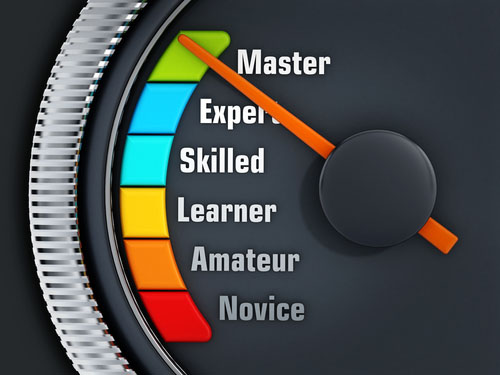How to Master Your Content Migration
Whether you’re upgrading to a new content management system (CMS) or your legacy system is about to expire, knowing what to do with all your content can be daunting. The process can be easily automated or you can opt for the manual route if your site is less than 1,000 pages. If you’re creating a new content strategy, trying to accommodate devices via responsive design, or simply needing to engage a new audience, it’s imperative to have the right players and plan in place.

The world’s most beloved brands - Fortune 100 and 500 companies have asked me to consult on how best to migrate their content. One of the more complex roles involved porting content while redesigning an entire legacy site in a mere 5 months. [I had to do a year’s worth of prep in less than half the time.] You might think, “A planned approach will always be foolproof.” As a seasoned Content Strategist, that’s never the case. There’s too much at stake and too many moving parts are in flux no matter how many times I have successfully managed migrations. I recommend following these steps prior to embarking on your own migration:
-
Content inventory: Before you move the pieces of the puzzle you need to know how many there are. Learn what you have – quality and quantity. Gauge which content moves the needle and what is a clunker. Where does your audience tend to congregate? Which content could be rewritten or reused? What are the metrics associated with each piece? Are videos too long? Is content not compelling or engaging? Is it on brand and on strategy? Create a scorecard to detect how to grade each piece by “redundant, outdated or trivial.” Outdated content can include 404s, too.
-
Content Strategy: This plays into the overarching purpose of the migration. One of the tools a refined content strategist will use is an audit or inventory which includes links to each piece of content, a summary of the content, who the owner is, where it belongs on the site map via ID, ideal content placement, patterns and topics/themes for every section of the site.
-
Metadata strategy: The data your customers and employees use to find the information they seek is significant. Develop information architecture and strawman search terms according to each topic of every page. Follow up with your analytics team to tag events and pages correctly using the keywords and descriptions provided. Make sure you create controlled vocabularies, uniform file naming conventions and alt tags for all assets and for all landing pages.
-
Training and governance strategies: Workflows may differ between different departments and groups. Analyze the current content production and management workflow. Is it repeatable and scalable? Does it provide the best service to all stakeholders? What could be improved? Create a gap analysis. Assign a board or committee member from each department. Try to review processes every month to create a rhythm. Agree on best practices and guiding principles for content creation, production and maintenance. Know your editorial strategy and day-parting formula. Integrate with as many stakeholders as possible to form a solid consensus, governance guide and contingency plan.
-
Orchestrate the moving pieces: When content is updated and changed, there is typically a frequency for each modification. At the same time, the process or culture will shift. Try to discuss the plan for which content will be migrated first and when. Which content is updated most frequently? Where should that content reside? Which templates and components currently exist? Which require customization? Is the juice worth the squeeze? Identify advocates within each department or discipline – people who can evangelize the essence of the migration, educate others on its goals and commit to the actual content mapping exercises and eventual migration plan.
Define the Right Taxonomy
Design an intuitive information architecture (IA). The content migration is where the metadata comes alive. Map the content within the current CMS to the future state sitemap. Take the inventory/audit ID#s such as “Homepage 0.1” and pencil in where each piece should fit in the new site architecture. Alternatively, you can inventory your old CMS and then map each template and component to the new CMS. This is the most time consuming piece and not all of your content will fit neatly into the new framework. That’s where the governance board comes in handy. They can vote on outdated, redundant and trivial content and trim the fat to leave the essentials. Also, the development process may have decided to map the IA only through the first two or three levels, leaving the remaining content to be determined during migration.
Pause for a moment. Think about the tagging system to implement. Use the controlled vocabularies and tagging library / spreadsheet as a guide. You can automate this process with a good content strategist or IA who knows how to pair each piece of content to metadata. Create a master spreadsheet tracking content types, relationships, topics and sub-topics. The end goal is to ensure content is findable, filterable, searchable, accessible (use Web accessibility guidelines) and easy to display and ultimately consume. This way, content will be digested by the right audience at the right time and the desired format.
Porting Content
This will feel like second nature to you if you prepped your content properly as outlined. An imperative tool is your master spreadsheet. It should include each site section (old and current), each page, page titles, H1-H6 tags, keywords/metadata descriptions, the content owner, the new template ID or name, and the business owner who approves of each piece. Also include each language, localization statistics and translation partners. Define how complete different languages need to be, if characters need to be added to current templates, and how / who will manage the oversight process.
During your content inventory, one of the prime content buckets was outdated content. Perhaps you tracked 404 pages in this category, or maybe you added a list of 404s to a separate sheet. Either way, when visitors request pages dropped during the migration, they will need to know where to find that information. Some will have certain pages bookmarked, while others will stumble on content. This is why it’s important that you track the relationship between the new URLs and the old URLs which will also help you in the QA and testing phase. Create a redirect policy and a 301 redirect guidepost for all pages which expire, are archived or have been combined.
Quality Assurance Testing
Hooray – you made it this far but you still have one last hurdle. Allow ample time to review all content by subject matter experts and business units. Have your analytics team report any bugs. Test all browsers, tablets, mobile formats and other devices to ensure content appears correctly. This is an ongoing, iterative process. Remember when I mentioned the governance committee? They will need to conduct monthly content process reviews, content quality reviews, measuring content against metrics and making updates to each department as needed.

Suzanne Baran
With 18 years of experience, Suzanne has worked with the world's most beloved brands: Intel, MGM, Toyota, AT&T, Yahoo!, Fiji Water, Sony, Skype and others. Recently named the #4 top Woman in Tech Speaker by The Next Web, she's mastered content strategy, content architecture, governance, copy, digital marketing, SEO, SEM and CMS planning needs.